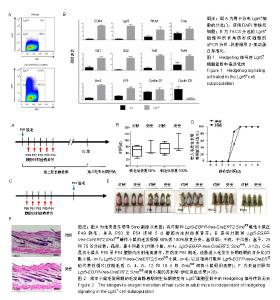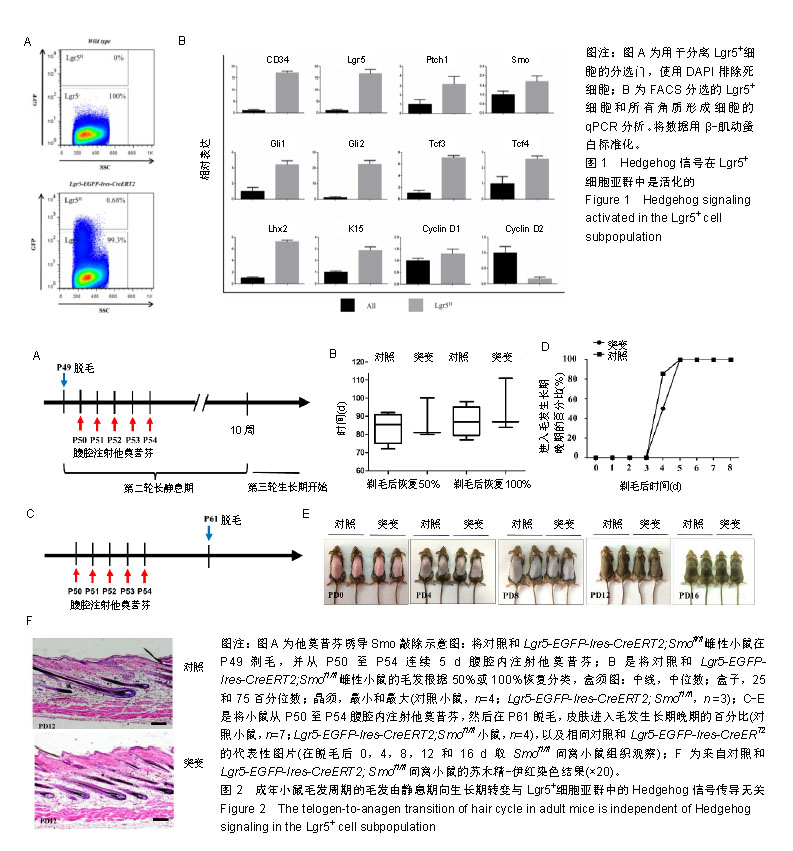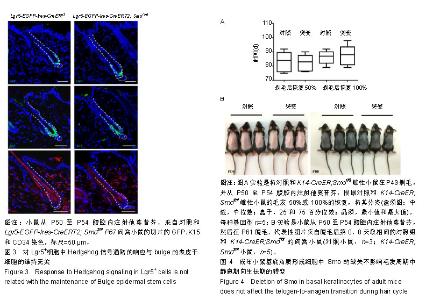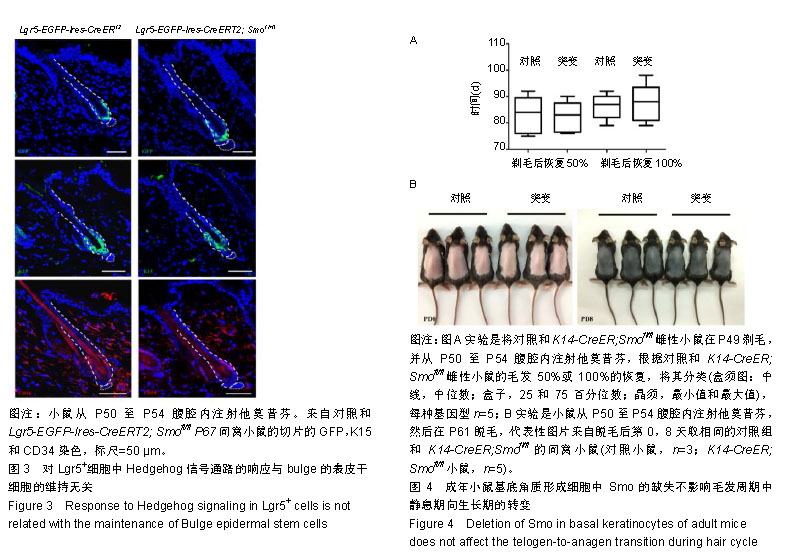| [1]Abe Y, Tanaka N. Roles of the Hedgehog Signaling Pathway in Epidermal and Hair Follicle Development, Homeostasis, and Cancer. J Dev Biol. 2017;5(4). pii: E12. doi: 10.3390/jdb5040012.[2]Jiang J, Hui CC. Hedgehog signaling in development and cancer. Dev Cell. 2008;15(6):801-812.[3]Aberger F, Ruiz I AA. Context-dependent signal integration by the GLI code: the oncogenic load, pathways, modifiers and implications for cancer therapy. Semin Cell Dev Biol. 2014; 33:93-104.[4]Bai CB, Auerbach W, Lee JS, et al. Gli2, but not Gli1, is required for initial Shh signaling and ectopic activation of the Shh pathway. Development. 2002;129(20):4753-4761.[5]Masuya H, Sagai T, Moriwaki K, et al. Multigenic control of the localization of the zone of polarizing activity in limb morphogenesis in the mouse. Dev Biol. 1997;182(1):42-51.[6]Buscher D, Bosse B, Heymer J, et al. Evidence for genetic control of Sonic hedgehog by Gli3 in mouse limb development. Mech Dev. 1997;62(2):175-182.[7]Bai CB, Stephen D, Joyner AL.All mouse ventral spinal cord patterning by hedgehog is Gli dependent and involves an activator function of Gli3.Dev Cell. 2004;6(1):103-115.[8]Ding Q, Motoyama J, Gasca S, et al.Diminished Sonic hedgehog signaling and lack of floor plate differentiation in Gli2 mutant mice.Development. 1998;125(14):2533-2543.[9]Tabin CJ, McMahon AP.Recent advances in hedgehog signalling.Trends Cell Biol. 1997;7(11):442-446.[10]Mill P, Mo R, Fu H, et al.Sonic hedgehog-dependent activation of Gli2 is essential for embryonic hair follicle development.Genes Dev. 2003;17(2):282-294.[11]St-Jacques B, Dassule HR, Karavanova I, et al.Sonic hedgehog signaling is essential for hair development.Curr Biol. 1998;8(19):1058-1068.[12]Woo WM, Zhen HH, Oro AE. Shh maintains dermal papilla identity and hair morphogenesis via a Noggin-Shh regulatory loop. Genes Dev. 2012;26(11):1235-1246.[13]Gritli-Linde A, Hallberg K, Harfe BD, et al.Abnormal hair development and apparent follicular transformation to mammary gland in the absence of hedgehog signaling.Dev Cell. 2007;12(1):99-112.[14]Brownell I, Guevara E, Bai CB, et al. Nerve-derived sonic hedgehog defines a niche for hair follicle stem cells capable of becoming epidermal stem cells. Cell Stem Cell. 2011;8(5): 552-565.[15]Zhang B, Tsai PC, Gonzalez-Celeiro M, et al.Hair follicles' transit-amplifying cells govern concurrent dermal adipocyte production through Sonic Hedgehog.Genes Dev. 2016;30(20): 2325-2338.[16]Wang LC, Liu ZY, Gambardella L, et al.Regular articles: conditional disruption of hedgehog signaling pathway defines its critical role in hair development and regeneration.J Invest Dermatol. 2000;114(5):901-908..[17]Paladini RD, Saleh J, Qian C, et al. Modulation of hair growth with small molecule agonists of the hedgehog signaling pathway. J Invest Dermatol. 2005;125(4):638-646.[18]Hsu YC, Li L, Fuchs E. Transit-amplifying cells orchestrate stem cell activity and tissue regeneration. Cell. 2014;157(4): 935-949.[19]Jaks V, Barker N, Kasper M, et al.Lgr5 marks cycling, yet long-lived, hair follicle stem cells.Nat Genet. 2008;40(11): 1291-1299. [20]Long F, Zhang XM, Karp S, et al. Genetic manipulation of hedgehog signaling in the endochondral skeleton reveals a direct role in the regulation of chondrocyte proliferation. Development. 2001;128(24):5099-5108.[21]Vasioukhin V, Degenstein L, Wise B, et al. The magical touch: genome targeting in epidermal stem cells induced by tamoxifen application to mouse skin. Proc Natl Acad Sci U S A. 1999;96(15):8551-8556.[22]Jensen KB, Driskell RR, Watt FM. Assaying proliferation and differentiation capacity of stem cells using disaggregated adult mouse epidermis. Nat Protoc. 2010;5(5):898-911.[23]Greco V, Chen T, Rendl M, et al. A two-step mechanism for stem cell activation during hair regeneration. Cell Stem Cell. 2009; 4(2):155-169.[24]Oshimori N, Fuchs E. Paracrine TGF-beta signaling counterbalances BMP-mediated repression in hair follicle stem cell activation. Cell Stem Cell. 2012;10(1):63-75.[25]Myung PS, Takeo M, Ito M, et al. Epithelial Wnt ligand secretion is required for adult hair follicle growth and regeneration. J Invest Dermatol. 2013;133(1):31-41.[26]Botchkarev VA, Botchkareva NV, Roth W, et al.Noggin is a mesenchymally derived stimulator of hair-follicle induction.Nat Cell Biol. 1999;1(3):158-164.[27]Botchkarev VA, Botchkareva NV, Nakamura M, et al.Noggin is required for induction of the hair follicle growth phase in postnatal skin.FASEB J. 2001;15(12):2205-2214.[28]Plikus MV, Mayer JA, de la Cruz D, et al.Cyclic dermal BMP signalling regulates stem cell activation during hair regeneration.Nature. 2008;451(7176):340-344. |



